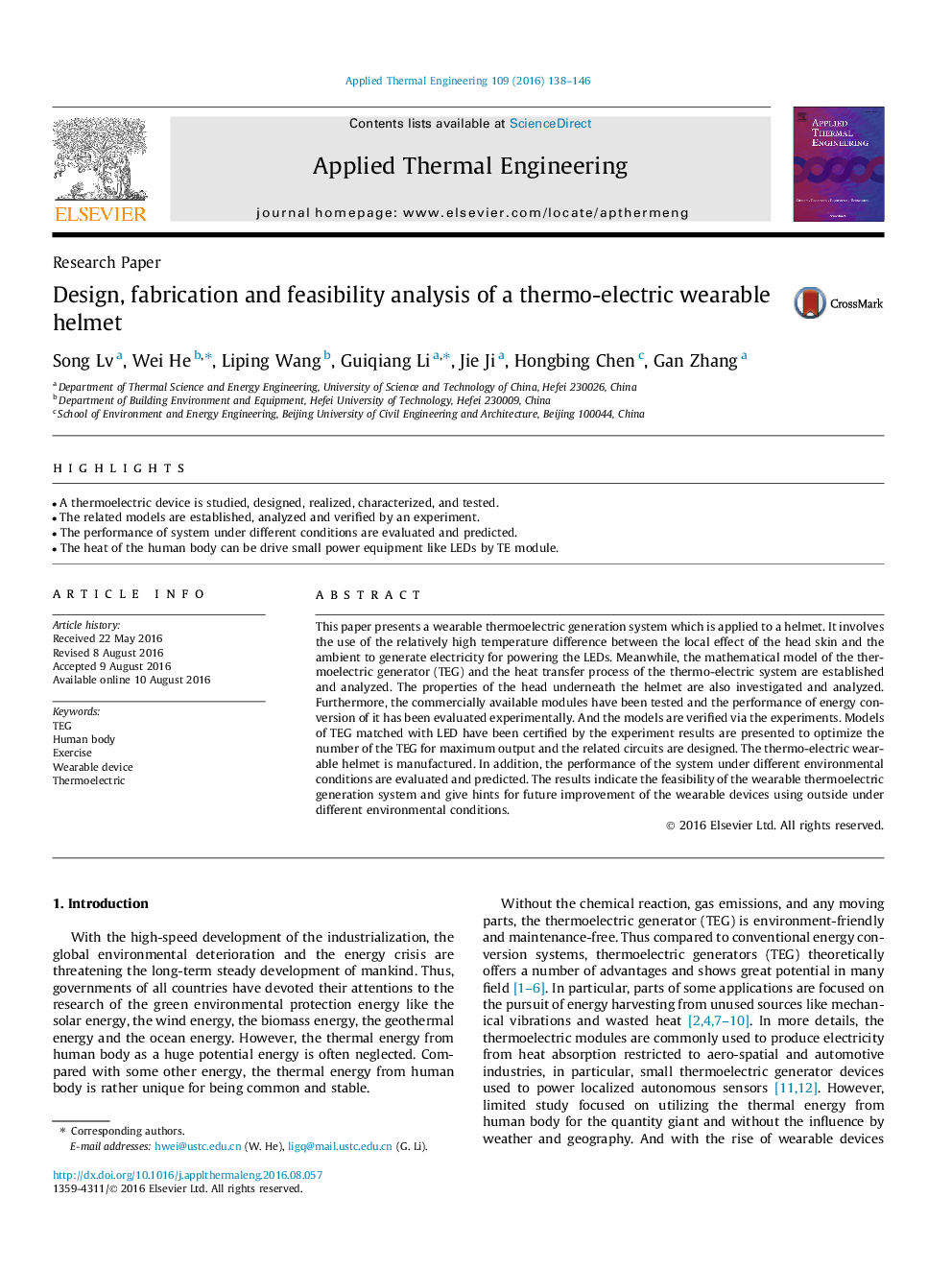| Article ID | Journal | Published Year | Pages | File Type |
|---|---|---|---|---|
| 644450 | Applied Thermal Engineering | 2016 | 9 Pages |
•A thermoelectric device is studied, designed, realized, characterized, and tested.•The related models are established, analyzed and verified by an experiment.•The performance of system under different conditions are evaluated and predicted.•The heat of the human body can be drive small power equipment like LEDs by TE module.
This paper presents a wearable thermoelectric generation system which is applied to a helmet. It involves the use of the relatively high temperature difference between the local effect of the head skin and the ambient to generate electricity for powering the LEDs. Meanwhile, the mathematical model of the thermoelectric generator (TEG) and the heat transfer process of the thermo-electric system are established and analyzed. The properties of the head underneath the helmet are also investigated and analyzed. Furthermore, the commercially available modules have been tested and the performance of energy conversion of it has been evaluated experimentally. And the models are verified via the experiments. Models of TEG matched with LED have been certified by the experiment results are presented to optimize the number of the TEG for maximum output and the related circuits are designed. The thermo-electric wearable helmet is manufactured. In addition, the performance of the system under different environmental conditions are evaluated and predicted. The results indicate the feasibility of the wearable thermoelectric generation system and give hints for future improvement of the wearable devices using outside under different environmental conditions.
